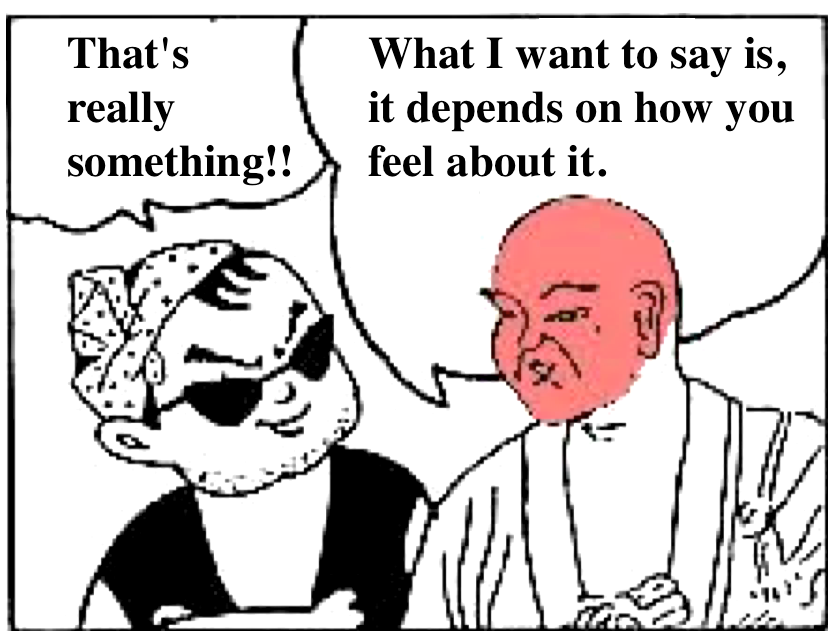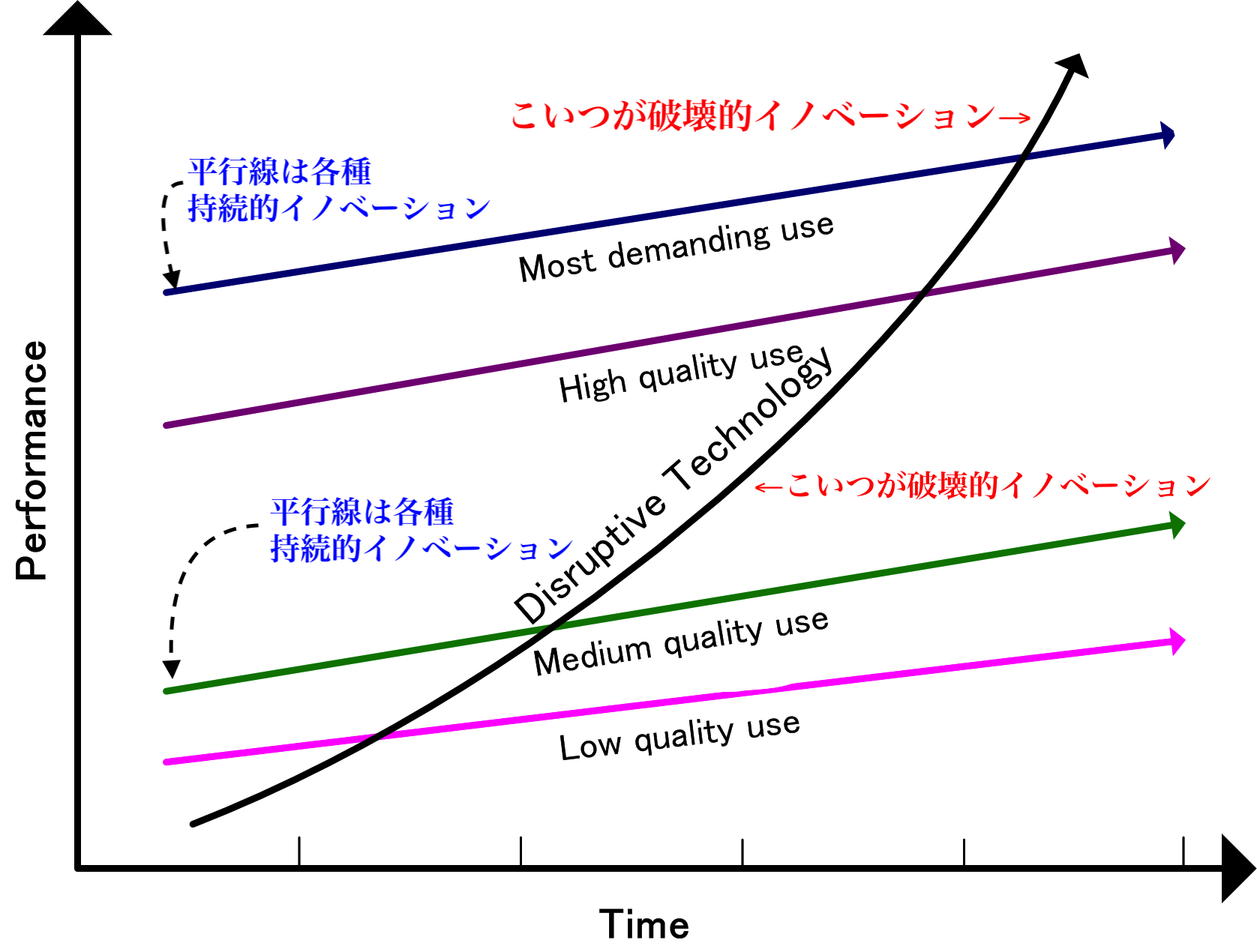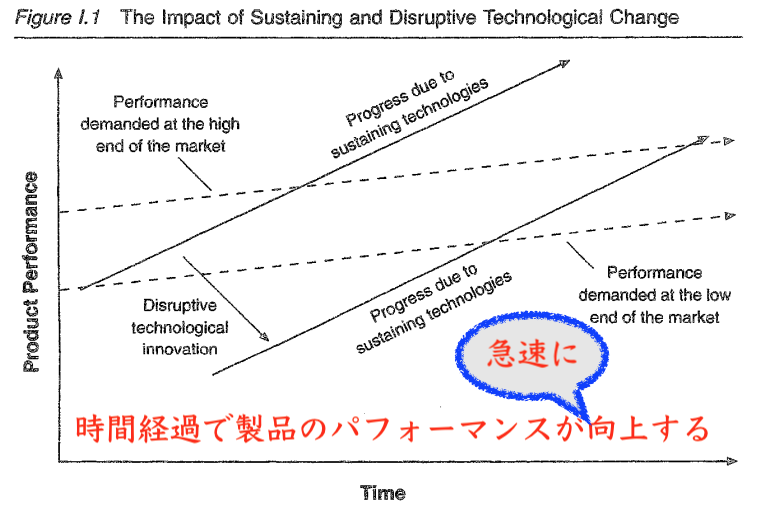There are three patterns of innovation in your company


日本のイノベーションのジレンマ : 破壊的イノベーターになるための7つのステップ / 玉田俊平太著、翔泳社 , 2015年の第8章(08-Stamada_jap_innv_dillem-8.pdf)を解説します。
| 1 |
177 |
イノベーションに対する3種類のアプ
ローチ 1)新市場破壊(アーリーアダプターの席巻とシェアの激変) 2)ローエンド型破壊 3)持続的イノベーション |
| 2 |
179 |
新市場型破壊では無消費がターゲットに |
| 3 |
ローエンド型破壊では過剰満足がター
ゲットに=ティファールのケットル |
|
| 4 |
181 |
持続的イノベーションではメンタルモデ
ルの変化を=ブレゲの時計 |
| 5 |
184 |
日本にもメンタルモデル・イノベーショ
ンのチャンスが |
| 6 |
185 |
長い歴史と独自の文化が活かしきれてい
ない |
| 7 |
188 |
日本刀の魅力をベースにした製品がアメ
リカなどで大評判 |


持続的イノベーション(Continuous Innovation)は、イノベーションの原義であ る、1)新しい財貨の生産、2) 新しい生産方法の導入、3)新しい販路の開拓、4)原料や供給源の獲得が以前にはないもの、そして、5)それゆえに新しい組織が生まれること、という5 つの要素が、(破壊的イノベーション=DIに比べてより)緩慢なスピードでおこるものだと「想定」されています。 なお、持続的という用語でまぎらわしいのは、昨 今流行っているSDGsがらみで、サステイナブル・イノベーション(Sustainable innovation)という用語がありますが、これは、持続的イノベーションのうち、環境負荷の少ないイノベーションのことをさします。 "Sustainable innovation is the creation of something new that improves performance in the three dimensions of sustainable development: social, environmental and economic."
UC San Diego のサイトによると:Continuous innovation is more than just incremental changes. It relates to the ongoing, gradual evolution that occurs in our activities, operations, and creations. The majority of innovation happens at the incremental level, and when done deliberately, it drives organizations forward one project, change, and idea at a time. It occurs across all levels and all functions in an organization.- https://blink.ucsd.edu/sponsor/innovate/whatis.html
| Continuous Improvement |
a method for identifying
opportunities for streamlined tasks and reduced waste. Example: Lean
Six Sigma or Business Process Management |
| Operational Excellence |
aligning organizational
resources toward sustainable improvement. Example: Key Performance
Metrics |
| Change Capability and
Organizational Readiness |
Assesses tolerance for change
and ability to transition. Example: Change Management. |
| Innovative Thinking |
The science of innovation,
including processes and methodologies to increase diversity of thought.
Example: Design Thinking |
| Culture |
The underlying spirit and
principles guiding an organization and the decisions it makes. Example:
People factors, History |
| 以上の出典 |
https://blink.ucsd.edu/sponsor/innovate/whatis.html |
"A digital
disruptor is any entity that effects the shift of fundamental
expectations and behaviors in a culture, market, industry, technology
or process that is caused by, or expressed through, digital
capabilities, channels or assets." from Gartner
Glossary.
●旧クレジット:イノベーショ ンの3つの基本戦略→現クレジット:持続的イノベーション
リンク
文献
その他の情報
Copyleft, CC, Mitzub'ixi Quq Chi'j, 1997-2099
Do not paste, but
[Re]Think our message for all undergraduate
students!!!